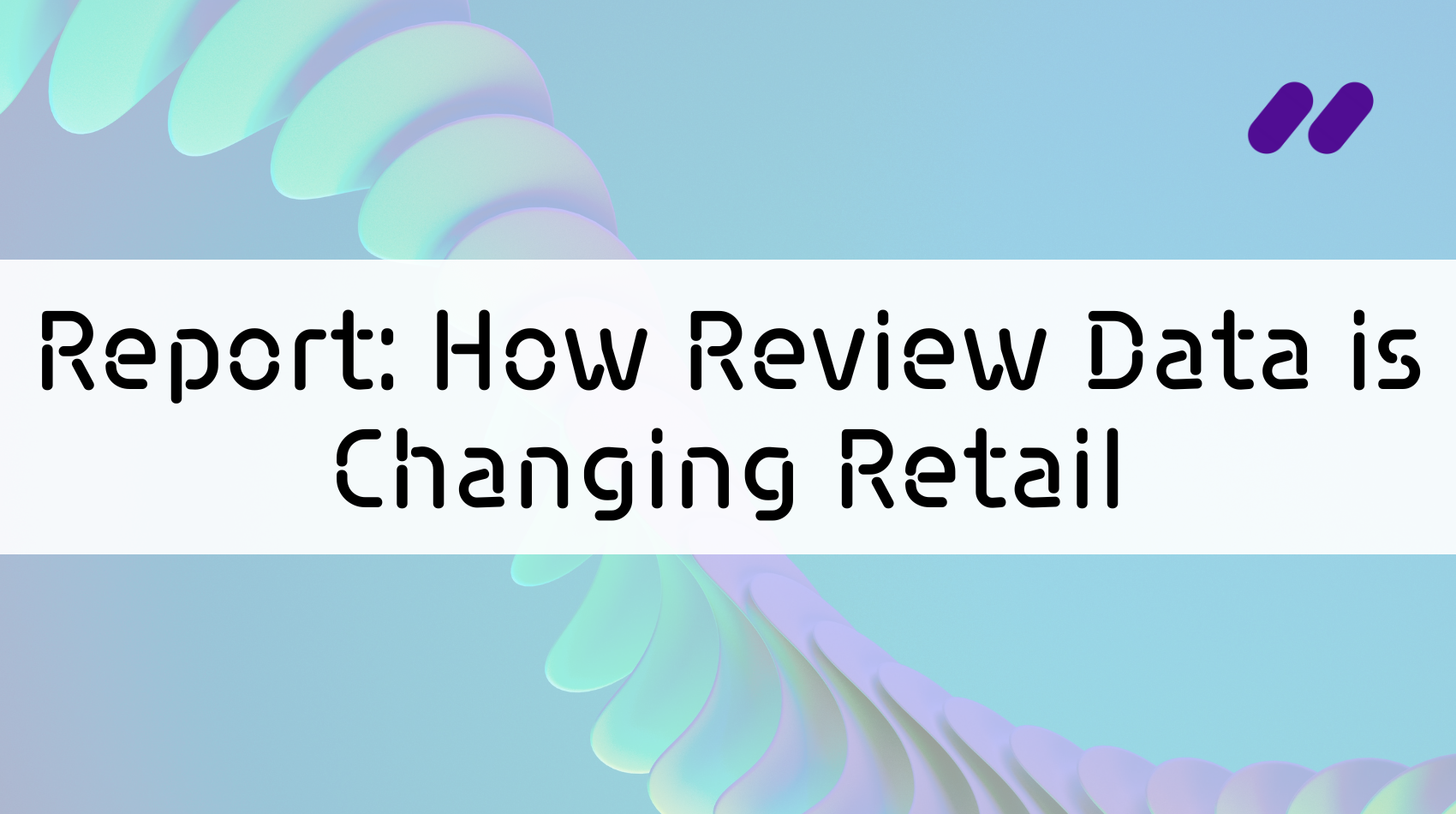Artificial intelligence is officially in business. Expanding on traditional CX metrics, such as surveys and Net Promoter Scores, sophisticated artificial intelligence (AI) tools dig into feedback data from hundreds of thousands of customers, across multiple channels, providing CX teams with meaningful, actionable insights into customer behaviour.
The capabilities and scope of AI have increased multifold in the past five years. While machine learning and natural language processing have been on the rise for decades, their big successes primarily occurred in the realms of academia, R&D and industry operations. Today, AI platforms cross sectors and industries, applicable to every department in a company and affordable to small and medium-sized businesses. AI tools can learn, be trained, process algorithms, gather and analyze data, even make predictions.
According to recent Forrester research, companies that leverage advanced insights-driven business capabilities are 2.8x more likely to report double-digit year-over-year growth than firms that have only started to employ AI tools. That same research shows that more than 60% of global data and analytics decision makers planned to increase their data management and analytics budgets from 2020 to 2021. Meanwhile, AI technologies carry the potential to have a huge impact on CX as a field and on the companies who leverage AI for their CX initiatives and strategies.
“AI gives you the ability to mine for pieces of gold in data for the really insightful patterns within your customer behaviour,” explains Certified Customer Experience Professional and current President & Chair of CXPA Toronto Lawrence Levinson. “That forces you to look at yourself from your customers’ perspective, in ways you might not have before.”
Though AI has entered the mainstream across industries, only 34% of consumers say they think they’ve interacted with AI technology—yet when asked about the technologies they use in their daily lives, it turns out that 84% had recently used at least one AI-powered service or device.
AI tools in everyday use today include:
- Chatbots and related customer-service and sales automation
- Augmented and predictive recommendation engines, search engines, and virtual assistants
- Data gathering, sentiment analysis and related insights
- Other machine learning platforms, including customer need prediction and empathy-oriented AI.
These tools identify patterns and trends in how customers interact with a company—some aggregate and track data, while others delve into analyzing qualitative data, namely information supplied by customers in their own words.
With more companies across industries adopting AI tools into their customer-facing strategies, it’s no surprise that both customer expectations and customer behaviour have changed accordingly. Today, CX is completely intertwined with AI by necessity. Thankfully, CX professionals now have more AI tools than ever to enhance and deliver effective strategies. This guide to AI and CX outlines how to bring AI into every aspect of customer experience and use these tools to design and deliver empathetic and meaningful experiences across the customer journey.
1. Defining AI through a CX lens
By aggregating different forms of customer data from several channels—such as long-form answers from survey programs or verbatim reviews on social media—organizations have the opportunity to see recurring emotional patterns in their customer journeys. “This data can show the friction points for a business, whether it’s already a customer-focused organization or not,” says Levinson.
With the right AI tools, companies can use data to reveal patterns and insights that CX teams might not have thought about before. This is especially valuable for understanding the significant emotional component of the customer journey, including how people feel about a brand and why, as well as when in the journey their emotional engagement changes. Emotional feedback is central to solving the experience equation and generating the detailed insights needed for informed decision-making.
3 crucial uses of AI for CX:
- Providing insights: Numerous AI-powered platforms are focused on gathering, aggregating and analyzing data to help CX teams identify customer insights that can shape CX strategy, inform sales, customer service and other departments, and help companies unsilo their data to make holistic business decisions.
- Enhancing interactions. When companies understand their customers better through data, they can create engaging brand experiences that resonate with them from service queries to making purchases.
- Automating processes. From workflow to customer service and sales interactions, AI automation saves companies time and money that can be reinvested into creating more effective CX strategy with greater ROI.
New AI tools for CX can:
- be implemented throughout the customer journey,
- enhance CX that contributes to company growth,
- solve critical problems around customer acquisition, retention and loyalty.
2. Charting a personalized customer journey with AI
With more customers engaging with brands through multiple channels online and offline, the customer journey map has become more useful, more elaborate and nonlinear. In other words, much more akin to how people behave and as unique as every customer. While the digital customer journey now feels more relatable and human, the solution to mapping it and making sense of every interaction depends on machine learning that allows CX professionals to personalize the journey and meet customer expectations. With 80% of customers more likely to purchase a product if brands offer personalized experiences, the link between CX, AI and business outcomes is clear.
A customer experience map using AI tools for every touchpoint, channel and device
Today’s customer journey takes many twists and turns, from online research to in-store interactions with customer service or from a chatbot query to an e-commerce purchase. Some customers might browse product catalogues on their phones, but only buy when they’re on their desktops, while others feel most at home using major retail marketplaces for the majority of their purchases. Reaching customers where they’re at and giving them choices for engagement relies on using data intelligently. Here are several steps along the customer journey where AI tools create personalized engagement with brands and retailers.
Discovery and inquiry
- Search queries and predictive analytics to identify interests, develop awareness and help with product and service recommendations.
- Website activity tracking to direct customers to relevant sites.
- Proactive messaging to showcase products, sales or other incentives.
Exploration and comparison
- Search comparisons and recommendations to give customers more relevant product and services information, options for comparison and other recommendations. This ensures higher conversion rates, customer satisfaction and upselling, as well as lower return rates.
- Life-like images, video and virtual reality options to let customers see how products and services fit in their lives and spaces.
Evaluation and purchasing
- Data gathering and analysis to learn more about customers and provide more personalized experiences, including products, upgrades and other recommendations.
- Chatbots and other virtual assistants to quickly answer the most common customer questions on products and services, ensuring higher customer satisfaction.
Retention and support
- Qualitative data analysis and natural language processing to respond accurately to customer questions empathetically.
- Data gathering and analysis tools to respond to customers’ website and app activity and identify customer problems.
Feedback and advocacy
- Insights-oriented sentiment and data analysis to understand customer behaviour and respond accordingly.
- Feedback solutions to engage customers in conversation with brands and with other customers, determine the real why behind customer problems and deliver individualized responses, whether automated or with service and sales agents.
3. AI platforms tailor-made for CX
How a personalized AI search tool gets CX results
New AI platforms are making sure that every website search, ecommerce search, chatbot query or voice assistant question returns a relevant answer and furthers customer engagement. As a part of CX, the internal search function relies on quality data and intelligent tools to harness that data. AI-powered search company Coveo is responsible for a relevance platform that is changing the way businesses integrate data into customer experience and bring product and content together in the right space in the right place in the customer journey.
Coveo’s machine learning models are capable of making data more meaningful to customers and to companies who invest in data-driven CX. That means using data to give people the answers they need, alongside relevant content recommendations, wherever they are in their digital journey with a brand. The result is a more personalized, satisfying and successful retail experience.
Coveo has focused on being a layer of technology that enables any enterprise to not worry about the structure and form of all of their content. Rather, Coveo gathers that information together from its enterprise search background, connects it and unifies that data into a common index. As with customer service-related searches, the search box of an e-commerce site or a retail company’s online store is a way for customers to interact in their own words with a company—the difference is that this AI-powered search covers all product details and related relevant products, and leads directly from brand interaction to increased sales.
“Our view is that you have all these people, all this content and modes, so why not use machine learning to give you the best chance of getting the most relevant content to that individual wherever they are on that journey.” – Marc Floisand, Coveo’s SVP Product & Industry Marketing
Fasken rebuilds their online customer experience
PROBLEM:
Global law firm Fasken was struggling with a mess of unconnected data silos outside of their Sitecore instance. They were stuck with a limited site search that was unable to contextualize their 40,000+ documents depending on the intent of their visitors.
SOLUTION:
They implemented Coveo directly into their existing Sitecore UI, using Coveo’s out of the box connectors to expand their search index outside of just their Sitecore content, to reach across the organization. Then, leveraging Coveo’s artificial intelligence alongside Sitecore XDB, they were able to contextualize their content based on a user’s intent while on the site, giving each of them a tailored experience within their content search.
RESULTS:
Fasken saw an increase in search utilization of 32%, as well as an increase in the quality of content that they were providing. By personalizing each user’s journey, they increased both their time spent on site (up 22%) and their seminar registrations (up 12%) –the latter of which was a KPI they were highly focused on.
Conversational AI enables people to communicate with companies through websites, apps and mobile devices simply by writing or talking as they naturally would—no phone trees to navigate or forms to fill out. Montreal-based AI company Heyday puts conversational AI into action in the retail sphere, where the customer journey has taken more than a few twists and turns recently.
How an AI chatbot makes customer engagement flow
Heyday’s platform focuses on not only recognizing human language and automating common interactions with ease, but understanding what customers want, wherever they are in the CX journey and through whatever channel they’re using, be it Facebook Messenger, website chat, WhatsApp, or email. Typically seen as a website chat, Heyday’s AI layer is on the front end of a brand’s website, there to discern the customer’s intent as soon as the chat is activated.
Based on past experiences, comparative audiences and the mining of deep data, the AI chatbot is able to process the natural language of up to 80% of FAQs, while the remaining 20% are sent to the appropriate human agents. In terms of customer experience, that also means customers can decide how they want to talk to the brand—whether over messaging, email, SMS on their phone or other modes.
Heyday’s e-commerce and CRM integrations with Shopify, Lightspeed, Magento and Salesforce make it an attractive solution for both personalized engagement at scale, the monetization of customer service, and an opportunity to replicate the in-store experience via online chat. With Heyday’s AI product search feature, users can hint at what they’re looking for, and the chatbot can evaluate needs, and deliver the right product to them directly in-chat: just like being pointed toward the right product by an expert sales associate in a store.
The added bonus of Heyday’s AI layer is data capture from chats. That data can be brought into a company’s data strategy for understanding customer behaviour, creating a better customer journey, boosting sales and maintaining meaningful customer relationships.
“Heyday is the bridge between the e-commerce technology and the customer’s voice. Every connection, every touchpoint, is important.” – Brad Wing, VP Strategy and Partnerships at Heyday
Popeye’s Supplements makes gains in online sales through customer service automation
PROBLEM:
At the outset of the COVID-19 pandemic, Popeye’s Supplements had to find a way to replicate the in-store experience online for its highly specialized product offers.Popeye’s was experiencing a significant uptick in online orders for the first time ever, as customers felt safer shopping online. This led to higher demands for online customer care and assistance.
SOLUTION:
Heyday proposed implementing an AI chatbot to offer immediate assistance to customers, and alleviated strain on the customer support team. Afterward, Heyday implemented an AI product search functionality to accelerate ecommerce sales and shepherd customers on their purchasing journey to replicate in-store conversations via a 24/7 chatbot.
RESULTS:
Popeye’s has saved at least 50% in customer service costs with Heydays. Popeye’s has automated 20% incoming requests with our FAQ automation feature. Heyday’s chatbot finds the ideal product for ecommerce shoppers 60% of the time, without any human intervention from a Popeye’s sales associate.
Companies who have been gathering survey and other customer data over the years, compiling online reviews of products or services, logging every customer service interaction, are sitting on an untapped data goldmine of authentic feedback. It’s qualitative meaningful data, gathered from thousands of people, that’s too complex for even a small team to analyze. Keatext’s text analytics AI platform mines this unstructured data to reveal the motivations and reasoning behind customer behaviour.
How text analytics uncovers insights in customer feedback
To understand the full story of customer engagement at an individual and emotional level, companies need AI text analytics tools that can understand customers in their own words and surface insights that tell compelling stories, from customer satisfaction and frustrations to the consequences of a negative interaction. Being able to map all those moments through data can bring CX to life via personalization.
Keatext’s AI text analytics for customer experience allows CX teams to structure text feedback into normalized data that is suitable for conducting analytics: they can find variations of occurrences, show trends and create new insights, such as predicting the likelihood of a specific customer to churn. When CX professionals are able to combine “big data” with “big stories,” they join customers’ lived realities with a brand’s strategies for creating emotional connections—they can see what works and what doesn’t, measure effectiveness and prove ROI.
“By using vivid data gathered from text analytics to understand customer behaviour, CX professionals are able to tell stories rooted in empathy—that engages not only potential customers but makes a compelling argument to company executives for AI-powered CX.” – Narjès Boufaden, Keatext Founder and CEO
Driving product improvements – and a culture change – at Bombardier Recreational Products
PROBLEM:
Eager to better understand customers, BRP saw the potential value of the insights contained in their feedback. But they faced one massive roadblock: they had over 10 years worth of survey responses and call centre transcripts, unstructured text in both French and English.
SOLUTION:
BRP found in Keatext an agile solution that could be up and running in an instant without extensive training. And it was advanced, not just frilly word counts – Keatext gave BRP tangible data to influence internal stakeholders to make customer-centric decisions.
RESULTS:
The result? A corporate shift. Keatext helped BRP find not only a wealth of insights that allowed them to drive product improvements, but greater success as a customer-centric organization that prioritized solutions based on customer needs and wants.
4. Choosing the right AI tools for your organization
AI tools for customer experience give companies the ability to understand customer behaviour right down to individual preferences for product options and channels of engagement. These are the tools helping retailers and brands get ahead of trends and come out on top in their sector. But with so many new AI-powered solutions out there, companies need to determine their data needs and scope before diving into the wide world of AI.
As the digital customer journey evolves, creating an AI strategy to meet it needs to be a quick and flexible process.
Look at your most important CX questions and research the technological solutions available, asking:
- How will this AI solution align CX strategy with both specific tasks and organizational goals?
- What are the most pressing CX problems we need to solve using data?
- How are we currently listening to customers and what are they telling us?
As with onboarding any new technology, AI platforms must fit in with current strategies and systems. Many new AI tools are designed to act as an integrative layer within existing CX or customer service, helping to index and make more effective use of existing and newly gathered data.
Choose AI tools that:
- Are insights-oriented and align with current strategies to solve your team’s or company’s most pressing problems,
- Integrate easily into company systems and CX channels, don’t require an entire IT team to oversee, and are flexible as company objectives change,
- Put customer behaviour, needs and emotional connection to your brand first, enhancing their experiences across touchpoints and channels,
- Can also be used to measure CX strategy success and its relation to ROI.
5. Make AI a part of your customer experience strategy
“The future economy will belong to those who can digest and aggregate and tell stories about data. It’s where we’re headed already.” – Lawrence Levinson, President & Chair of CXPA Toronto
New AI tools are made to be applied to such an evolving customer journey, regardless of the cause or the magnitude of the change. They help companies understand trends and gather information on individual decision-making. AI technologies that harness vast quantities of recent customer feedback can give companies the flexibility to respond quicker to shifts in customer behaviour, whether they’re emotional responses to services or different channels of engagement.
CX teams today have a goldmine of data at their fingertips. To put massive amounts of customer data to use, they need AI tools that gather customer information from the first click of a search, analyze what customers are really saying in their feedback, respond more helpfully, and provide insights into customer behaviour. AI tools are already changing the way CX professionals engage with customers, tell customer stories and shape strategy. With the ability to track their own effectiveness, the AI tools of 2022 and beyond have a measurable impact on a company’s customer-facing image as well as its quarterly revenue.






